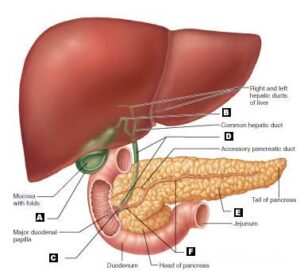Gestational diabetes is a type of diabetes that is first seen in a pregnant woman who did not have diabetes before she was pregnant. Some women have more than one pregnancy affected by gestational diabetes. Gestational diabetes usually shows up in the middle of pregnancy. Doctors most often test for it between 24 and 28 weeks of pregnancy.
Gestational diabetes goes away after you give birth. But it can affect your baby’s health, and it raises your risk of getting diabetes later in life. You can take steps so you and your baby stay healthy.
Most patients are managed by diet control. Some may need insulin.
Gestational Diabetes Symptoms
Women with gestational diabetes usually don’t have symptoms or may chalk them up to pregnancy. Most find out that they have it during a routine screening.
You may notice that:
- You’re thirstier than usual
- You’re hungrier and eat more than usual
- You urinate more than usual
Gestational Diabetes Causes
When you eat, pancreas releases insulin, a hormone that helps move a sugar called glucose from your blood to your cells, which use it for energy.

During pregnancy, your placenta makes hormones that cause glucose to build up in your blood . Usually, your pancreas can send out enough insulin to handle it. But if your body can’t make enough insulin or stops using insulin as it should, your blood sugar levels rise, and you get gestational diabetes..
Gestational Diabetes Risk Factors
You’re more likely to get gestational diabetes if you:
- Were over weight before you got pregnant
- Are African-American, Asian, Hispanic, Alaska Native, Pacific Islander, or Native American
- Have blood sugar levels that are higher than they should be but not high enough to be diabetes
- Have a family member with diabetes
- Have had gestational diabetes before
- Have polycystic ovarian syndrome (PCOS) or another health condition linked to problems with insulin
- Have given birth to a large baby (weighing more than 9 pounds)
Gestational Diabetes Tests and Diagnosis
Gestational diabetes usually happens in the second half of pregnancy. Your doctor will check for it between weeks 24 and 28, or sooner if you’re at high risk.
Your doctor will give you a glucose challenge test: You’ll drink glucose in a sweet drink. An hour later, you’ll take a blood glucose test to see how your body handled all that sugar. If the results show that your blood sugar is higher than a certain level, you’ll need a glucose tolerance test.
If you’re at high risk but your test results are normal, your doctor might test you again later in your pregnancy to make sure you still don’t have it.
5 Tips for Women with Gestational Diabetes
- Eat Healthy Foods
Eat healthy foods from a meal plan made for a person with diabetes. A dietitian can help you create a healthy meal plan. - Exercise Regularly
Exercise is another way to keep blood sugar under control. It helps to balance food intake. After checking with your doctor, you can exercise regularly during and after pregnancy. Get at least 30 minutes of moderate-intensity physical activity at least five days a week. This could be brisk walking, swimming, or actively playing with children. - Monitor Blood Sugar Often
Because pregnancy causes the body’s need for energy to change, blood sugar levels can change very quickly. Check your blood sugar often, as directed by your doctor. - Take Insulin, If Needed
Sometimes a woman with gestational diabetes must take insulin. If insulin is ordered by your doctor, take it as directed in order to help keep blood sugar under control. - Get Tested for Diabetes after Delivery
Get tested for diabetes 6 to 12 weeks after your baby is born, and then every 1 to 3 years.For most women with gestational diabetes, the diabetes goes away soon after delivery. When it does not go away, the diabetes is called type 2 diabetes. Even if the diabetes does go away after the baby is born, half of all women who had gestational diabetes develop type 2 diabetes later. It’s important for a woman who has had gestational diabetes to continue to exercise and eat a healthy diet after pregnancy to prevent or delay getting type 2 diabetes. She should also remind her doctor to check her blood sugar every 1 to 3 years.